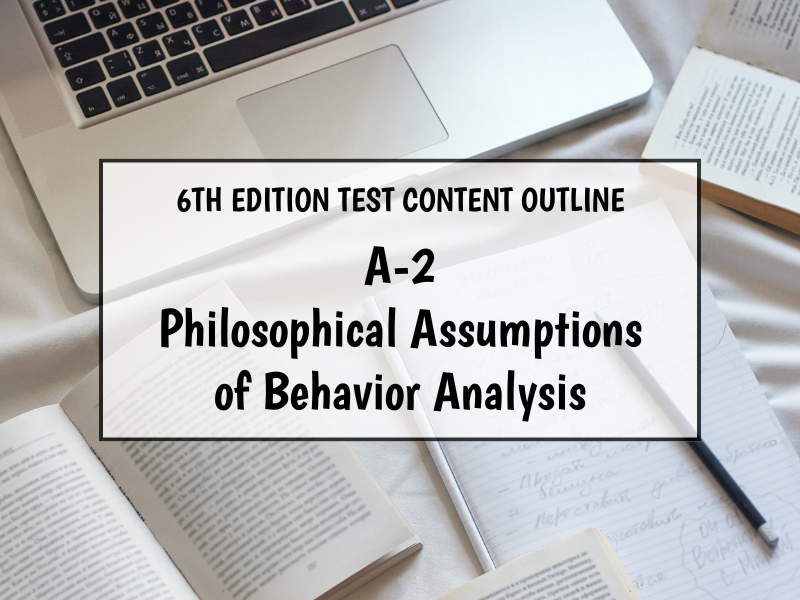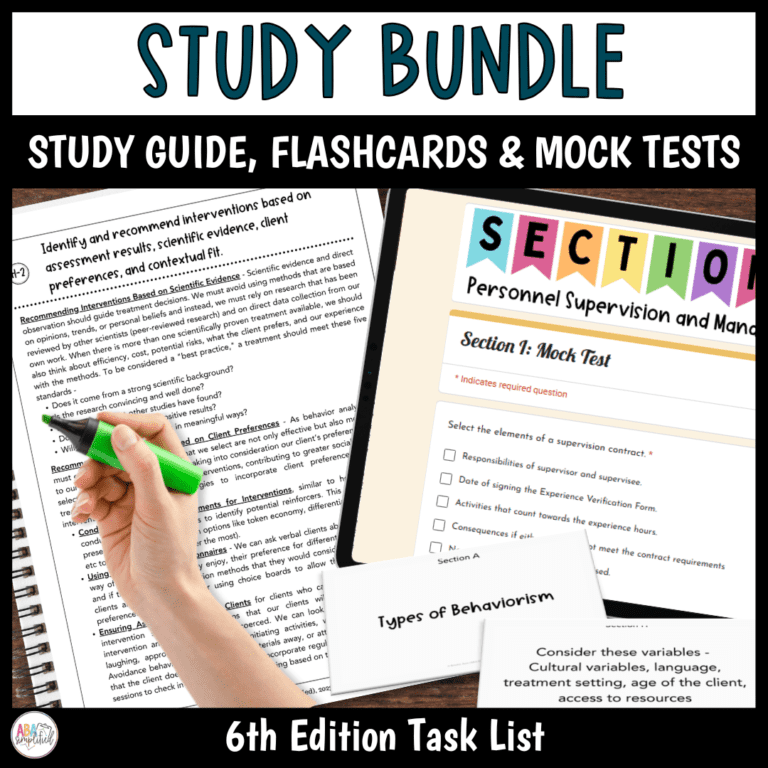BLOG POST
A-2 Philosophical Assumptions of Behavior Analysis
Published on 22nd April 2025 by ABA Simplified


Are you preparing for the BCBA® exam or wanting to deepen your understanding of behavior analysis? One of the most critical areas to understand is the philosophical assumptions that support the science of behavior. These principles shape how we approach real-world problems.
In this blog, we’ll briefly explore the key philosophical assumptions i.e., determinism, empiricism, experimentation, replication, parsimony, and philosophical doubt. For a deeper dive (and to ace your exam!), check out our Section A Study Guide and Flashcards.
Determinism
Determinism is the idea that behavior is lawful and orderly. It happens for a reason, not by accident or fate. If a child throws tantrums every time they go to the grocery store, there’s a reason. Maybe it’s lunch time or nap time – they could be tired or hungry, maybe they saw a toy or some candy that they want. Behavior analysts identify these patterns to create effective interventions.
Empiricism
ABA relies on objective observation and data, not guesses. Think about it. Would you trust a doctor who diagnosed you without tests? Probably not. In the same way, behavior analysts rely on objective data, not hunches, to understand behavior. Through direct observation, interviews, and functional analyses, we identify what’s really maintaining behavior.
Let’s consider a child who hits peers during recess. Instead of assuming the child is “aggressive,” a BCBA collects data and finds the hitting only occurs when the child wants access to a preferred toy. With this information, we can now teach more appropriate replacement behaviors like teaching the child to ask for the toy instead.
Experimentation
Science isn’t about opinions — it’s about proof. Behavior analysts use experiments to test whether their interventions actually cause behavior change. They manipulate variables (introducing an intervention like functional communication training) and measure the results.
For example, to reduce crying when the hair dryer is turned on during haircuts, the behavior analyst tests two options – distraction i.e., offering screen time while drying their hair, and functional communication training (e.g., saying “break, please”) that results in the hair dryer being turned off for a minute. Data shows that functional communication training was more effective. With this experiment, we can show that it was indeed our intervention that reduced the target behavior, and not just pure luck.
Replication
Replication means demonstrating that an intervention works repeatedly under the same conditions. A single success isn’t enough. We want our intervention to produce consistent results across settings, people, and time.
For example, a child who has a meltdown every time a transition is initiated is taught to use a visual schedule in a clinic setting, which greatly improves transitions. The BCBA trains the parents to use a visual schedule at home, which also results in improved transitions at home. The aide at school then begins using a visual schedule, also seeing improvements in transitions. The same intervention worked repeatedly in different settings i.e., it’s effects were replicable.


Parsimony
Parsimony means always starting with the most straightforward explanation before jumping to complex theories.
For example, a child begins closing their ears and running every time they go to the grocery store. Before considering more complex explanations, simply asking the child why revealed that the store was too loud and the fluorescent lights were flickering, triggering discomfort. Before implementing a lengthy behavior intervention plan, some headphones and possibly sunglasses (or shopping at a different store) might be all that is needed.
Philosophical Doubt
Philosophical doubt reminds us to take a moment and consider “What if I’m wrong?”. An intervention that worked last year might not work today. Kids change, environments shift, and science evolves. It’s okay to say, “This isn’t working, let’s try something new”.
Consider a 4-year-old who is “refusing” to toilet train and is being “stubborn” despite months of sticker charts, edible, social, and tangible reinforcers. The BCBA thinks “What if ‘stubbornness’ isn’t the issue?”. On further investigation, they discover the child fears the sound of the flush. They worked on desensitizing the child to flushing first, and then reintroduced the potty routine and had success this time around!
Want more study materials? Check out the BCBA Exam Prep Bundle, which helps you break down test content using simple language and master the materials. It includes study guides, printable flashcards, and 150+ mock exam questions to test your understanding!


Sign Up For Blog Updates!
Subscribe to stay in the loop with my latest blogs!
Thank you!
You have successfully joined our subscriber list.

